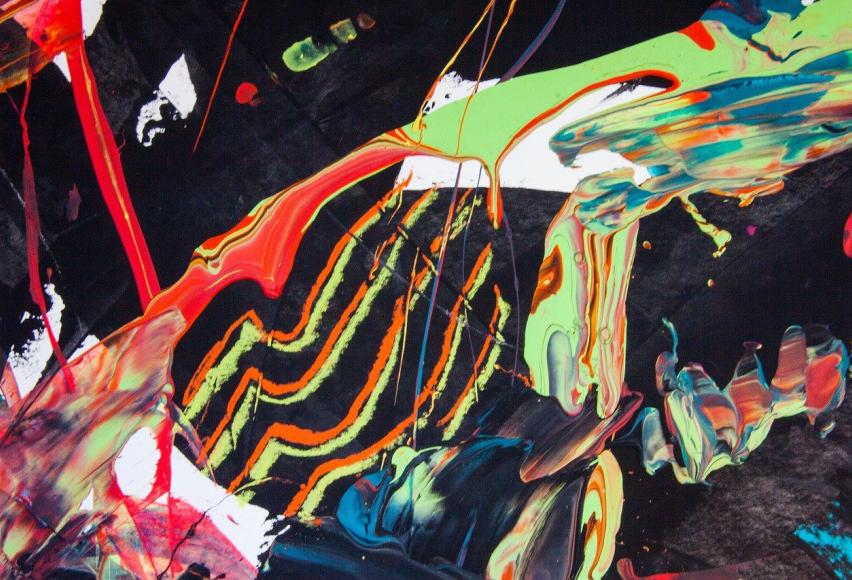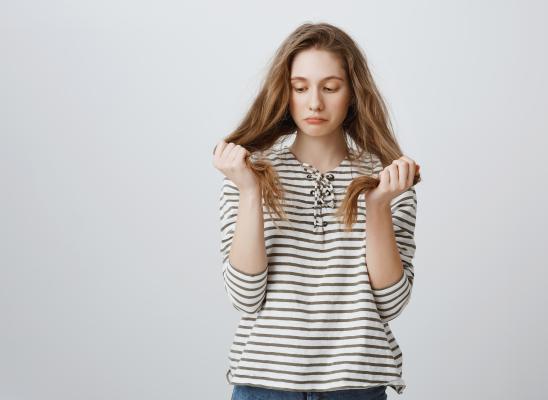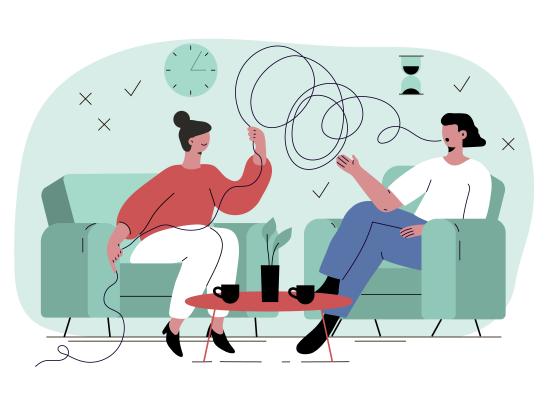Art Therapy & BFRBS

Online test
Find out the severity of your symptoms with this free online test
Body-focused repetitive behaviors (BFRBs) like trichotillomania, also known as hair-pulling disorder (HPD), can trigger a wide range of emotions and social and psychological issues. It can also impact various areas of your life, such as friendships, romantic relationships, family dynamics, and/or work productivity. The most common feelings associated with HPD are shame, embarrassment, anxiety, depression, mood swings, low self-esteem and self-confidence, body image issues, frustration and loneliness, and guilt.
Can Art Therapy Really Help Reduce BFRBs like hair-pulling disorder (HPD)? Possibly
Because HPD is often shrouded in secrecy, people with this condition often have a hard time expressing themselves and interacting with others. As a result, many sufferers feel “voiceless.” These individuals do not feel “safe enough” to share their innermost beliefs, feelings, and behaviors with others for fear that they will shun or avoid them. People with HPD are also afraid that people, even loved ones and friends, along with co-workers and acquaintances, will look at them differently because of their condition.
Even though that is unlikely to occur, the fear is real and terrifying to the person, who is struggling with a BFRB like hair-pulling disorder. It is this fear that prevents people with HPD from allowing others to get too close to them. In fact, for many people with HPD, the mere thought of someone discovering their "secret" is enough to increase the hair-pulling. The feeling of being isolated from others, emotions that often accompany BFRBs like HPD, only heighten the stress and anxiety, leading to more frequent hair-pulling.
Thus, BFRBs like HPD are lonely conditions. Because these individuals avoid communicating and interacting with others, they typically only have a few close friends. This is intentional to keep the condition under wraps. But, it is a lonely existence for many with HPD. People with BFRBs like HPD have no outlet. These individuals do not what to share their thoughts, fears, or behaviors with friends or loved ones, and they definitely don't want to commit to traditional psychotherapy sessions. So, the condition remains hidden, and the person with HPD remains isolated.
The truth is living with BFRBs like HPD can feel like you are drowning in a cold, dark lake – with no one to rescue you. Some people with this condition are unable to properly communicate what they are thinking or how they are feeling because their thoughts and emotions are constantly changing – intensifying then easing. BFRBs are cyclic conditions – there are ups and downs. It's confusing, as such, many people with HPD are unsure if their description of HPD would be accurate if they shared the details with others.
Talking to someone about your thoughts, feelings, and behaviors (hair-pulling) is challenging, but extremely necessary. Keeping your thoughts and feeling bottled up inside can lead to a devastating situation like suicide. This is especially true if you have developed depression as a result of HPD.
Speaking with a mental health professional (counselor, therapist, psychologist, etc.) can help you identify the origin of your BFRB and teach you ways to combat the urges to pull your hair, pick at your skin, bite your nails, etc. This professional can also provide you with a “safe space” to share your concerns and talk about your feelings.
What If You Are Not Keen on Traditional Therapy Approaches?
That is perfectly fine. A variety of psychotherapy approaches are available to treat BFRBs like HPD. Although the most common approaches are CBT, ACT, ERP, research suggests that art therapy may be a viable supplement or alternative treatment for anxiety-based conditions like BFRBs.
Why Art Therapy?
Some people with BFRBs like HPD feel like regardless of how much they express their feelings, concerns, and beliefs, nothing helps. As a result, these individuals are always looking for that “communication gateway.”
In other words, they are always searching for more effective ways to express what they are thinking and feeling. Because, these individuals often report feeling emotionally and physically “disconnected” or “isolated” from others, they become desperate to find a way to “rejoin” society. That is where art therapy comes into play.
Art therapists have training and experience in art and psychotherapy, which not only allows them to collaborate with you, but also teaches you how to communicate and express yourself more effectively using the medium of art. Thus, the goal of art therapy is to combine therapy with self-expression.
The good news is you don’t need artistic skills to benefit from this form of psychotherapy. The only thing required for art therapy to be effective is an open mind and willingness to explore your thoughts and feelings through drawings, paintings, etc. A benefit of this form of psychotherapy is that the art can often speak for itself.
So, even if you do not want to talk about an upsetting or negative thought, feeling, belief, or even behavior, you can express it in an art piece without uttering a single word. Thereby, art therapy is especially beneficial for people, who either have a hard time expressing themselves or who are physically unable to do so.
Art can become a conduit for these individuals. It can provide them with a “voice,” even if that “voice” is non-verbal. It can also offer these individuals with a way out of an, otherwise, solitary existence. Through art therapy, people with BFRBs like HPD can share a part of themselves with others – a part that has been kept hidden – i.e. hair-pulling, nail-biting, skin-picking, etc.
Art also helps some people with BFRBs like HPD become more self-aware and accepting of their bodies. It can also help these individuals develop their identities, so they have a better idea of who they are within (the self). Most importantly, art therapy can ease stress and anxiety, so these individuals no longer feel the need to self-injure themselves.
So, if you feel trapped within a long, scary tunnel, art therapy can provide you with a much-needed release – an uplifting light at the end of the tunnel. And, for some, art therapy may be a tipping point to help begin a conversation.
How Beneficial is Art Therapy for BFRBs like HPD?
As mentioned above, art therapy can help people with BFRBs like HPD express their thoughts, emotions, and experiences, when it feels impossible to do so verbally. Keep in mind, however, that art therapy isn't for everyone. In fact, studies suggest that the people, who receive the most benefit from this form of psychotherapy are the ones, who have a natural love, affinity, or interest in art.
Art therapy can help you unearth and understand repressed memories and experiences – things you may feel uncomfortable putting into words and sharing with others. This is important because these "hidden" memories and experiences often trigger or worsen ritualistic or compulsive behaviors, like hair-pulling. Art provides these individuals with the "safety" they need to open up and commit to the therapy process.
The good news is more and more psychotherapists are embracing art therapy as a viable treatment for BFRBs like HPD. In fact, the American Art Therapy Association asserts that art therapy exercises can build up self-esteem, self-confidence, and self-awareness, encourage emotional resilience, improve perceptiveness, resolve conflicts, and reduce or eliminate psychological distress. Studies also indicate that art therapy is effective for people, who struggle with anxiety disorders, especially when used in conjunction with other treatment methods.
What Are Art Therapy Activities That People with BFRBs like HPD Can Practice?
Listed below are activities that people with HPD can practice to reduce their anxiety and express themselves more effectively:
- Drawings and Paintings – Drawing and/or painting pictures can help you express your innermost feelings, fears, and beliefs – even if you have a hard time verbalizing them.
- Expressive Journaling – Contrary to popular belief, a journal doesn’t always have to contain words, sometimes it can just contain drawings, doodles, lines, images, etc. A journal with pictures, but without words is called an “expressive journal.” This type of journaling can help you express your feelings, thoughts, and beliefs artistically, instead of verbally.
- Family Model – This art exercise involves developing a model (clay, paint, playdoh, stick figures, etc.) of each family member – i.e. mother, father, siblings, or any other influential loved one to explore your family dynamics.
- “Brain Dump” – This activity involves drawing a large circle (bubble) to represent your true thoughts and feelings. Draw or write down the feelings, concerns, and issues that are triggering or worsening your stress, anxiety, and BFRBs (the "brain dump"). Try to complete this activity within 60-seconds. The purpose of this "dump” is to release your pent-up angst, so you are less inclined to engage in compulsive behaviors like hair-pulling.
- Mandala Designs – This technique involves creating patterns to help reduce your stress and anxiety and focus on the task-at-hand. The purpose of this technique is to help you process and address your anxiety, so you can create a wide range of calming and expressive art pieces.
According to a recent study, creating and coloring intricate geometric/rhythmic patterns can trigger a meditative state that is beneficial for people struggling with anxiety and BFRBs like HPD. Researchers also found that coloring mandala pictures can ease anxiety and reduce or eliminate the urge to engage in compulsions like hair-pulling.
In Summary
For many people with BFRBs like HPD, art therapy is not only an effective alternative to traditional psychotherapy, but also a lifesaver. This form of psychotherapy can offer you long-term benefits, especially when used with other treatment protocols. Art therapy is beneficial for people with BFRBs like HPD because it helps you work through your stress, anxiety, fears, worries, negative feelings, beliefs, and experiences, so you don't feel the need to resort to ritualistic behaviors like hair-pulling.
Art therapists teach you how to use art to convey your feelings, preventing them from accumulating, and becoming compulsive behaviors. This form of psychotherapy empowers people, who have a hard time verbalizing how they are feeling or what they are sensing or experiencing, by giving them another platform to develop their identity and express themselves.
References
1. Curry, N. A., & Kasser, T. (2005). Can coloring mandalas reduce anxiety? Art Therapy, 22(2), 81-85. Retrieved from https://www.tandfonline.com/doi/abs/10.1080/07421656.2005.10129441
2. Vennet, R. V. D., & Serice, S. (2012). Can coloring mandalas reduce anxiety? A replication study. Art Therapy, 29(2), 87-92. Retrieved from https://www.tandfonline.com/doi/abs/10.1080/07421656.2012.680047?journalCode=uart20
3. Art Therapy Resources. (2020). 10 art therapy exercises for anxiety. Retrieved from https://arttherapyresources.com.au/art-therapy-exercises-anxiety/
4. Abbing, A., Ponstein, A., van Hooren, S., de Sonneville, L., Swaab, H., & Baars, E. (2018). The effectiveness of art therapy for anxiety in adults: A systematic review of randomized and non-randomized controlled trials. PLOS ONE. Retrieved from https://doi.org/10.1371/journal.pone.0208716
5. Abbing, A., Baars, E. W., de Sonneville, L., Ponstein, A. S., & Swaab, H. (2019). The effectiveness of art therapy for anxiety in adult women: A randomized controlled trial. Front Psychology, 291(10), 1203. Retrieved from https://pubmed.ncbi.nlm.nih.gov/31191400/
6. Peris, T. (2019). What new research is telling us about treating BFRBs? Psychology Today. Retrieved https://www.psychologytoday.com/us/blog/touchy-subject/201907/what-new-research-is-telling-us-about-treating-bfrbs
7. Legg, T. (2020). Understanding trichotillomania: The urge to pull out your hair. Healthline. Retrieved from https://www.healthline.com/health/anxiety/trichotillomania
8. Psychology Today. (2020). Art therapy. Retrieved from https://www.psychologytoday.com/us/therapy-types/art-therapy
9. Nakell, S. (2017). Art therapy for body-focused repetitive behaviors: Translating the body’s metaphors. Therapy Today. Retrieved from https://www.therapytoday.com/art-therapy-for-body-focused-repetitive-behaviors-translating-the-bodys-metaphors/
10. Regev, D. & Cohen-Yatziv, L. (2018). Effectiveness of art therapy with adult clients in 2018: What progress has been made? Frontier Psychology, 29. Retrieved from https://doi.org/10.3389/fpsyg.2018.01531
11. Art Therapy Association. (2020). About art therapy. Retrieved from https://arttherapy.org/about-art-therapy/
Online test
Find out the severity of your symptoms with this free online test
Start your journey with TrichStop
Take control of your life and find freedom from hair pulling through professional therapy and evidence-based behavioral techniques.
Start Now



